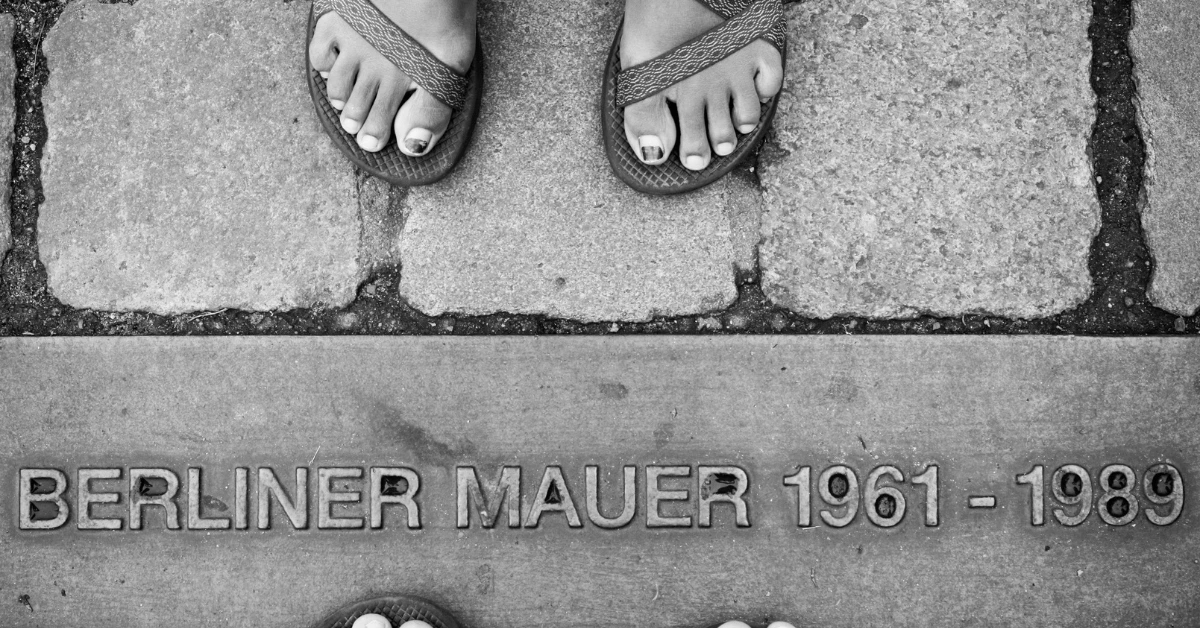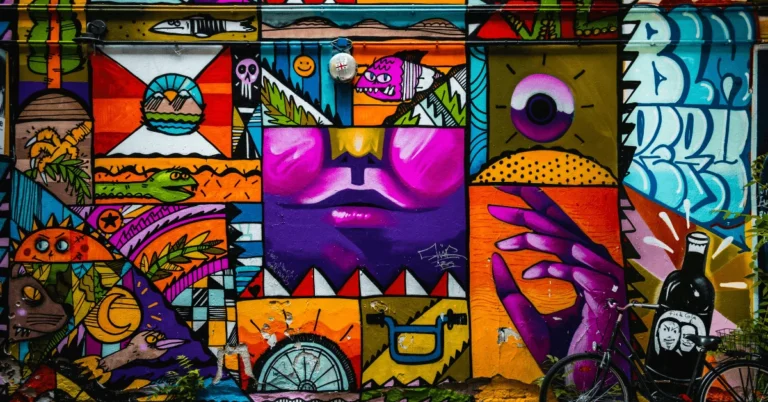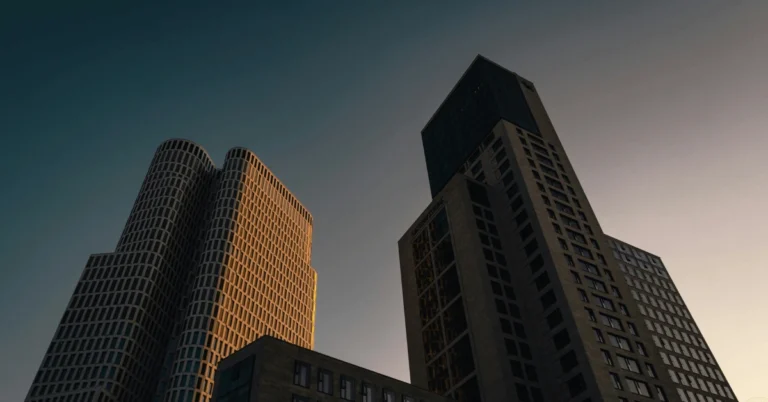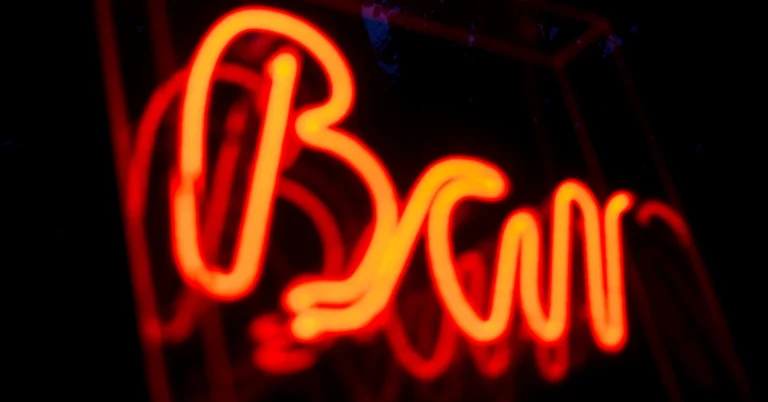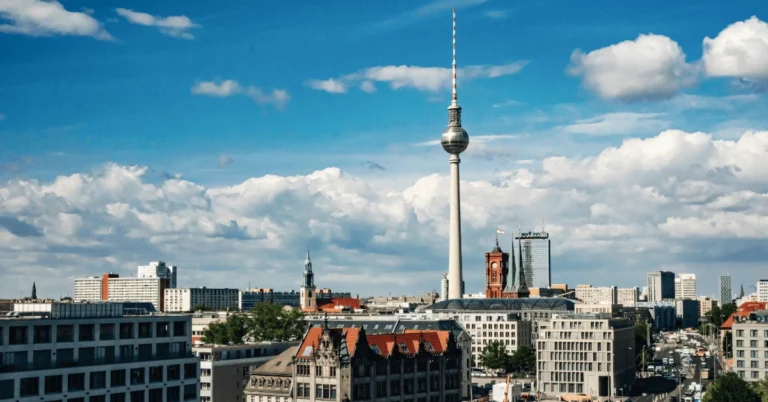Exploring the history of the Berlin Wall offers a concise insight into the stark divisions of the Cold War, marking not only a physical divide in Berlin but an ideological chasm between East and West Germany. Established overnight on August 13, 1961, this barrier became the emblem of the Iron Curtain, embodying the clash between communism and democratic capitalism. The Berlin Wall’s story is one of separation and a quest for freedom, ending with its fall on November 9, 1989, which symbolized the triumph of unity over division and marked the beginning of a new global era. Through understanding the Berlin Wall 2024, we gain essential lessons on the resilience against adversity and the enduring pursuit of liberty.
Origins of the Berlin Wall History
In digging into Berlin Wall history, we uncover a story of a divided city at the heart of the Cold War. It’s a tale where political ideologies clash and the world witnessed the literal and metaphorical ‘walling off’ of East from West.
Post-World War II Germany
After the defeat of Nazi Germany in World War II, the nation was a nexus of political change and post-war reconstruction. The victorious Allied Powers, which included the United States, the United Kingdom, France, and the Soviet Union, divided Germany into four occupational zones. This segmentation laid the groundwork for the establishment of two separate German states: the Federal Republic of Germany (West Germany) and the German Democratic Republic (East Germany) in 1949.
Rising Tensions and Division
The escalating Cold War tensions crystallized into a physical division when, in the dead of night on August 13, 1961, East German authorities began erecting the infamous Berlin Wall. The primary motive for the Wall’s construction was to prevent East Germans from defecting to the West. For the East German government, the Wall became a symbol of socialist self-preservation, while for the West and the rest of the world, it stood as a somber emblem of the Cold War’s stark realities.
Construction and Structure
As we dive into Berlin Wall history, it’s fascinating to see how this formidable barrier evolved from basic barbed wire to a complex system of concrete walls and defenses. The wall was not only a physical division but also a symbol of the ideological conflict of the Cold War era.
Initial Barbed Wire Barrier
In the early hours of August 13, 1961, the East German government embarked on a secret project that would change the face of Berlin forever. Workers rolled out barbed wire across the divide between East and West Berlin, which served as a preliminary blockade. Initially, this barrier was hastily constructed, but it effectively stemmed the tide of defections to the West.
Concrete Walls and Defenses
The barbed wire soon gave way to a more permanent and daunting concrete wall, which extended around 155 kilometers (96 miles) and towered at an average of 3.6 meters (11.8 feet). Here’s how the defenses stacked up:
- Guard Towers: Over 300 watchtowers punctuated the wall, allowing guards to surveil the ‘death strip’.
- Death Strip: A sandy tract that provided a clear line of fire for guards against defectors.
- Mines: Although reports vary, it is said that landmines and tripwires were part of the lethal defenses.
As years passed, the Berlin Wall turned into a sophisticated security system, underpinning the divide not only of a city and a nation but of two conflicting ideologies.
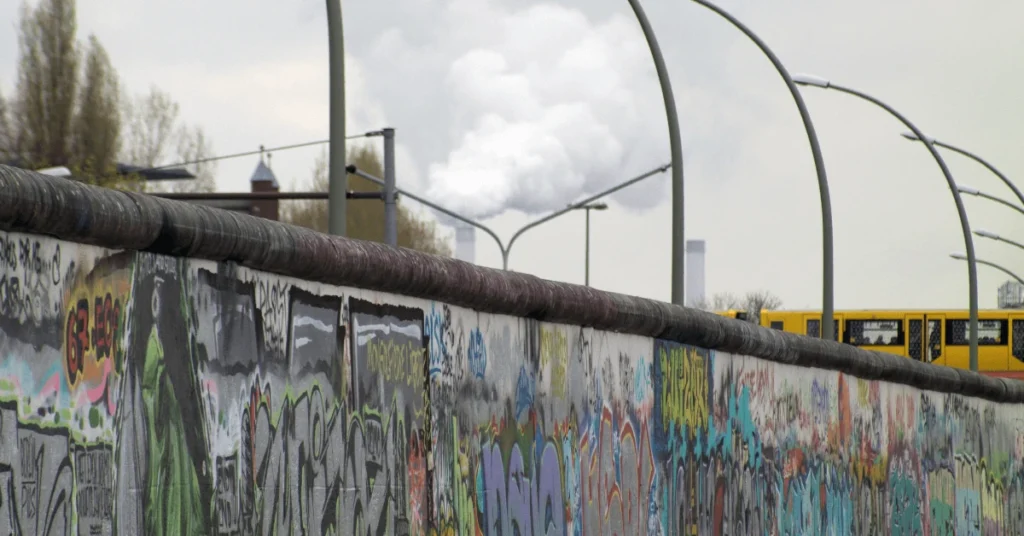
Life in Divided Berlin
We’re delving into a pivotal chapter of Berlin Wall history, where neighborhoods were bisected and families split between East and West Berlin. The concrete barrier not only carved a line through the city’s heart but also through the lives of Berliners, creating vastly different experiences on either side.
Impact on Citizens
In East Berlin and East Germany, citizens faced significant travel restrictions. The East German government implemented a series of measures to prevent their citizens from defecting to the West. Once the Wall went up, travel to West Berlin or West Germany became nearly impossible for most East Germans. Surveillance by the Stasi, the secret police, was omnipresent, creating an atmosphere of distrust and fear. Economic difficulties were also more pronounced in East Germany, often leading to shortages of goods that were readily available in West Berlin.
In contrast, West Berlin developed into an island of Western capitalism and freedom within the communist East. While those in West Berlin enjoyed more political freedoms and access to goods, the city was an exclave, surrounded by the Wall and East German territory. This unique situation led to a feeling of isolation among West Berliners, though they could travel to West Germany, albeit through strictly controlled transit routes.
Escape Attempts
Numerous attempts to escape East Germany were made during the Wall’s existence — over 5,000 were successful, but tragically, many failed. Escaping was perilous, with a fortified border that included guard towers, anti-vehicle trenches, and minefields. The attempts ranged from the simple yet dangerous act of rushing across the border to elaborate schemes involving tunnels, hot air balloons, and even modified cars designed to crash through the barricades. The sheer determination to overcome the division underscores the profound impact the Berlin Wall had on the lives of all Berliners.
Quick Fact
The total cost of the Berlin Wall amounted to 100 million Deutsche Mark.
International Context
When we delve into the Berlin Wall history, it’s clear that it was more than just a physical barrier; it symbolized the ideological discord that defined the global landscape for decades. This section sheds light on how the Cold War fueled the wall’s creation and the world’s reaction to it.
Cold War Antagonism
The Berlin Wall stood as the most concrete symbol of the Cold War, a period of intense rivalry between the Soviet Union and the United States, along with their respective allies. It represented the physical demarcation of East and West Berlin and, by extension, the divide between communist East recovering under Soviet influence and the capitalist West, supported by allies like France, Britain, and the US. This physical division of Berlin served as a frontline for Cold War tensions not just within Germany, but around the world.
Global Reactions
Internationally, the Berlin Wall drew a mixed response. While the Soviet Union and its satellite states viewed the wall as a necessary defense against western aggression, much of the international community, including many in the United States, France, and Britain, condemned its construction. The wall became a frequent point of contention in negotiations and a symbol for the lack of freedom under communism. Its presence reaffirmed the division not just of a city or a country, but of the world into two rival camps.
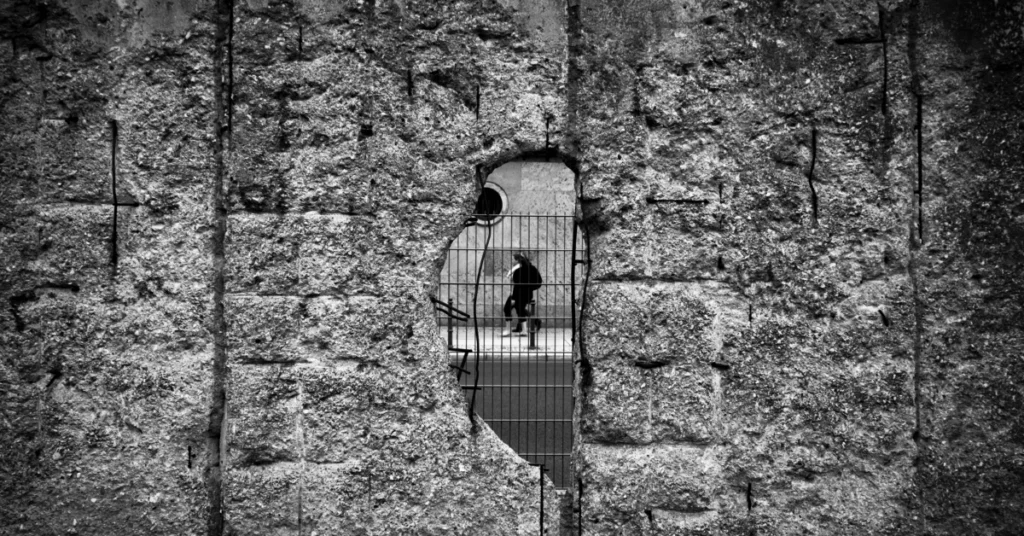
Political Changes Leading to the Fall
The culmination of events that led to the fall of the Berlin Wall is a significant chapter in Berlin Wall History. Reflecting on this period exposes us to a series of significant political shifts, beginning with high-level leadership changes within the GDR and bubbling pressures for reform from the populace that amplified the call for democratization.
GDR Leadership Changes
In the autumn of 1989, a pivotal change occurred when Erich Honecker was ousted from his role as the head of the Socialist Unity Party (SED) and the GDR government. His replacement, Egon Krenz, inherited a country amidst widespread discontent and calls for change. Despite Krenz’s efforts at reform, he was unable to stem the tide of revolution that swept across Eastern Europe.
Pressure from Within
Simultaneously, mass demonstrations became more frequent and vehement, signalling an undeniable push toward democratization. This internal pressure catalyzed the erosion of the authoritative grip previously held by the SED. An increase in the permeability of borders in neighboring countries and the policy of Glasnost, promoted by Soviet leader Mikhail Gorbachev, had a significant effect on the political landscape of East Germany. These reforms encouraged openness and transparency, further inspiring the East German populace to demand political change.
The Fall of the Berlin Wall
As we dive into Berlin Wall history, one of the most pivotal moments that stand out is the fall of the Berlin Wall in 1989. This momentous event not only marked the physical collapse of a divisive structure but also symbolized the end of a divided Germany and the easing tensions of the Cold War. Let’s look closer at the specific occurrences that led to this historical event.
The Berlin Wall go down, that was the most wonderful thing that could happen, absolutely. I celebrated with everybody in Berlin that day when the Wall was down.
Nana Mouskouri
Schabowski’s Press Conference
On November 9, 1989, Günter Schabowski, an East German Politburo member, held an unforeseen press conference that would inadvertently change the course of history. During this press conference, Schabowski mistakenly announced that East German citizens could cross the border “immediately,” without the intention of signifying an immediate policy change. This statement spread rapidly, fueling widespread confusion and leading to an overwhelming surge of East Berliners at the border crossings.
Border Openings
The cascading effects of Schabowski’s blunder were felt intensely at the border crossings. Most notably, at Checkpoint Charlie, and Harald Jäger, an East German border guard, found himself facing a throng of citizens demanding passage to West Berlin. Without definitive orders and with the situation escalating, Jäger made the decision to open the gate. His pivotal choice, along with similar actions at other crossings, effectively rendered the Berlin Wall moot, allowing East and West Berliners to meet and celebrate together after decades of separation.
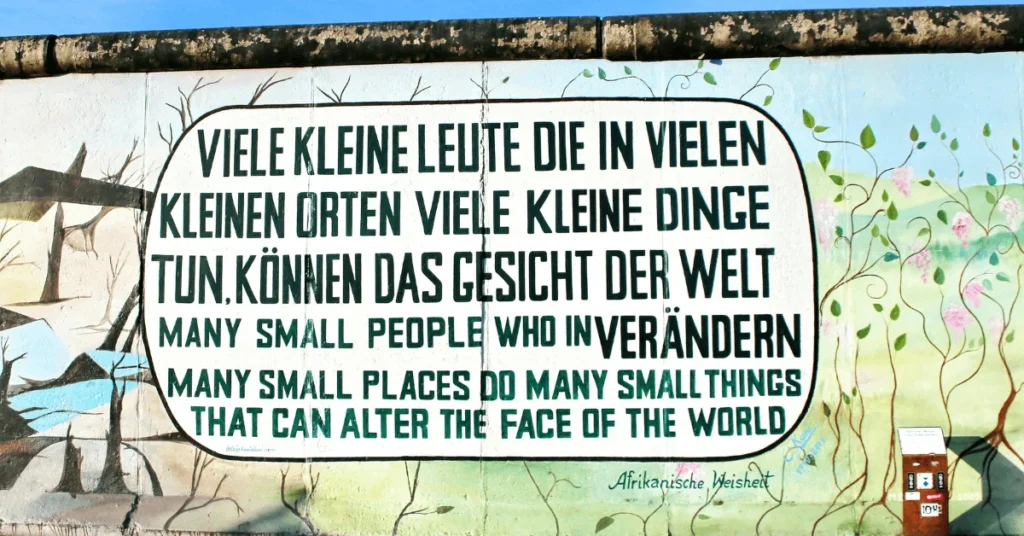
Aftermath: Toward Reunification
As we dive into Berlin Wall history, it’s impossible to ignore the monumental steps toward Germany’s reunification that followed the Wall’s fall. It’s a narrative of deconstruction and remembrance, a testament to freedom and a bold stride into unity that reshaped history.
Demolition and Remembrance
After the Berlin Wall’s fall on November 9, 1989, the world watched eagerly as an icon of division turned into a symbol of hope. The demolition process was not just physical but deeply symbolic, sparking a collective sigh of relief among Germans and the international community alike. Chunks of the Wall were collected and distributed around the world, serving as somber reminders of the past. Sections of the wall remain in Berlin as historical mementos, including the famous East Side Gallery and the preserved sections near the Brandenburg Gate, where some of the most jubilant scenes of the Wall’s breach played out.
Germany Reunified
The path to Germany reunified had its complexities, but the momentum was unstoppable. Formal reunification was achieved less than a year after the Wall came down, on October 3, 1990. An event marked by nationwide celebration, this significant moment in Berlin Wall history symbolized more than borders joining; it represented an ideological victory and a healing wound. The reunification brought economic, social, and political challenges, but the overwhelming sentiment was one of optimism for a future where Germany would again be whole.
Cultural and Historical Legacy
When we delve into Berlin Wall history, we encounter a complex tapestry of painful separation and eventual unity. This structure, more than just an imposing barrier, has become an emblem of the endurance and resilience of Berliners.
Monuments and Museums
In Berlin, remnants of the Berliner Mauer stand preserved as stark reminders of the past. Checkpoint Charlie and the East Side Gallery, adorned with photos and artworks, have transformed portions of the wall into open-air exhibitions. Museums dedicated to the Berlin Wall history, like the Berlin Wall Memorial, encapsulate the narratives of the citizens who lived in its shadow.
Educational Significance
The Berlin Wall history serves as an essential educational tool, illustrating the impact of political ideologies on everyday life. It’s a critical part of curriculums, ensuring that new generations understand the consequences of a divided world. Through personal stories and preserved historical sites, we teach the importance of freedom and the value of reunification.
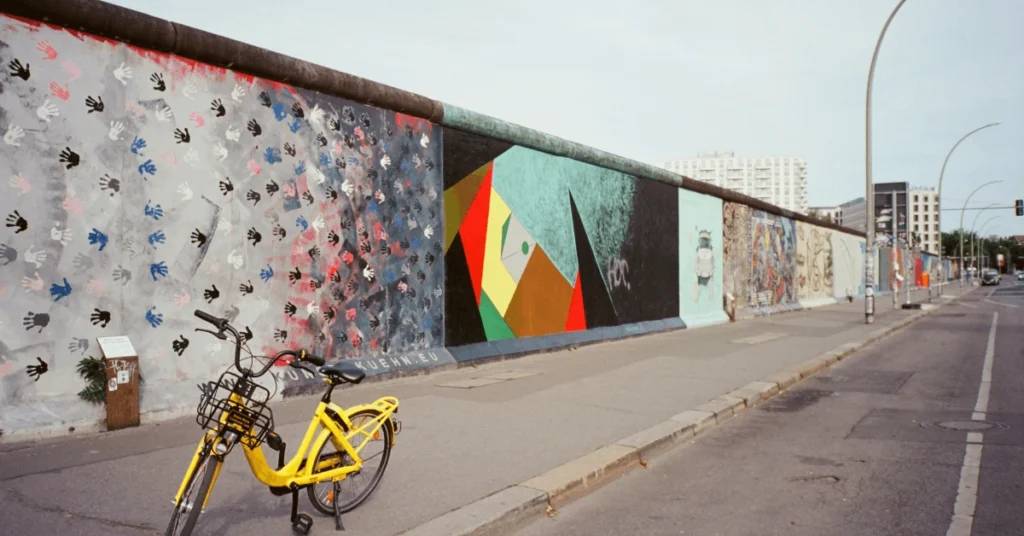
The Wall in Popular Culture
When we explore Berlin Wall history, we’re delving into a world where concrete walls not only divided a city but also deeply influenced the landscape of literature, film, art, and graffiti. Our collective fascination with the division that the Berlin Wall represented has birthed countless cultural artifacts that capture the essence of what it meant to live in the shadow of the Iron Curtain.
Literature and Film
In literature and film, the Berlin Wall serves as a potent symbol of division and the longing for freedom. Espionage thrillers and dramatic tales often revolve around the stark realities of life in a divided Berlin, where the wall is not just a backdrop but a character in its own right. Movies like “The Lives of Others” skillfully portray the atmosphere of surveillance and distrust prior to the wall’s fall. On the pages of novels, we’ve seen authors craft stories about the wall’s effect on the human spirit, illuminating the resilience necessary to overcome such literal and figurative barriers.
Art and Graffiti
The cold grey slabs of the Berlin Wall became an immense canvas for artists to express opposition and hope. In particular, the East Side Gallery stands as a testament to the power of art in the face of oppression. One of the most recognizable pieces is Dimitri Vrubel’s “My God, Help Me to Survive This Deadly Love,” which captures the infamous kiss between Brezhnev and Honecker, an ironic comment on the fraternal bond between Soviet bloc leaders. Graffiti on the wall was not merely vandalism; it was an act of political defiance, a voice for those who felt silenced by an imposing barrier that carved their city—and their lives—in two.
Frequently Asked Questions
In exploring the Berlin Wall history, we often encounter poignant questions that take us back in time to a divided Germany. Let’s dive into some of the queries that frequently arise when discussing this historic monument.
What events led to the construction of the Berlin Wall?
The construction of the Berlin Wall was a culmination of escalating Cold War tensions. After World War II, Germany was divided into four occupation zones. By 1961, rapid defections and economic disparities led the German Democratic Republic (GDR) to erect the Berlin Wall to prevent East Germans from fleeing to West Berlin.
What were some significant timelines and milestones in the history of the Berlin Wall?
Significant milestones of the Berlin Wall include its sudden construction overnight on August 13, 1961. Key timelines include the Berlin Crisis of 1961, US President Kennedy’s “Ich bin ein Berliner” speech in 1963, and the introduction of the “New Economic System” in East Germany in the mid-1960s.
How did the Berlin Wall impact Germany during the Cold War?
During the Cold War, the Berlin Wall symbolized the ideological divide between communism and capitalism. It physically and emotionally isolated East from West and became a daily reminder of the Iron Curtain that separated Eastern and Western Europe.
On what date did the Berlin Wall fall, and what were the reasons behind its collapse?
The Berlin Wall fell on November 9, 1989. The collapse was prompted by a series of political changes in the Soviet Union, the liberalization reforms of Eastern European countries, and immense public pressure from East German citizens, leading to a peaceful revolution and ultimately, the fall of the Berlin Wall.
If you liked this blog post about the topic: Berlin Wall History, don’t forget to leave us a comment down below to tell us about your experience with it.

